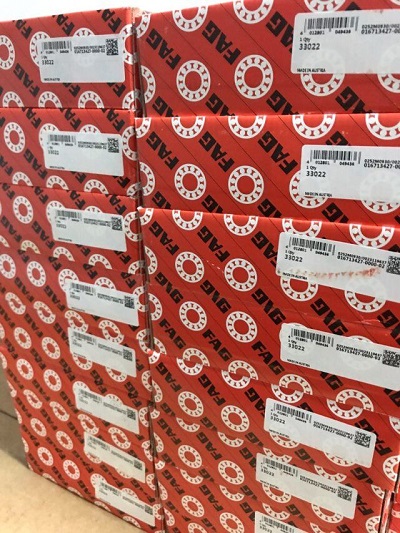
 News
NewsThe sound meter is used to check the size and sound quality of the rolling sound of the FAG bearing in operation. Even if the FAG bearing is slightly damaged such as peeling, it will emit abnormal and irregular sounds, which can be distinguished by the sound meter. It is a very common method to use hearing to recognize irregular movements. For example, using an electronic stethoscope to detect abnormal noise of a certain part is often a method used by experienced operators.
If the FAG bearing is in a good continuous rotation state, it will emit a low whining sound. If there is a sharp hiss, squeak and other irregular sounds, it often indicates that the FAG bearing is in a bad continuous rotation condition.
The sharp squeaking noise may be caused by improper lubrication. Inappropriate FAG imported bearing clearance can also cause metallic noise. The dents of the concave track on the FAG bearing outer ring track will cause vibration and cause a smooth and crisp sound. If it is caused by knocking scars during installation, noise will also be generated. This noise will vary with the speed of the FAG bearing. If there is intermittent noise, it means that the rolling parts may be damaged. This sound occurs when the damaged surface is rolled over. Contaminants in the FAG bearing often cause a hissing sound. Severe joint load damage will produce irregular and loud noises.
FAG bearing damage can be detected by hearing, but the FAG bearing must be replaced immediately when it has arrived. Therefore, a better method uses, for example, electronic condition monitoring equipment. Compared with the old method, the condition of FAG bearings can be estimated more accurately using a wooden stick.
Click here for more details about FAG Bearing 33022.

For the use of bearings, noise is very common. Even low-noise bearings in FAG bearings have the same situation. So, why does noise occur? Today I will introduce its essence to you.
(1) The raceway sound of FAG bearing and its control method The raceway sound is a slippery and continuous sound produced by rolling elements on the raceway surface of the FAG bearing when the FAG bearing is running, which is unique to all rolling bearings. Basic sound. The general bearing sound is the raceway sound plus other sounds. The raceway sound of a ball bearing is irregular, the frequency is above 1000 Hz, its main frequency does not change with the speed, but its total sound pressure level increases with the speed of the speed. For bearings with loud raceway sound, the sound pressure level of the raceway sound decreases with the increase in viscosity; while for bearings with low raceway sound, the sound pressure level of the bearing with low raceway sound changes from a decrease when the viscosity increases to more than about 20mm2/s. To have increased. The greater the rigidity of the bearing seat, the lower the total sound pressure level of the raceway sound. If the radial clearance is too small, the total sound pressure level and main frequency of the raceway sound will increase sharply as the radial clearance decreases. The methods to control the raceway sound are: select low-noise bearings, that is, bearings with small waviness, and carefully choose the conditions of use. The noise of the raceway often affects the noise of the entire machine, reducing the noise of the raceway can reduce the noise of the entire machine.
(2) The impact sound of rolling elements and their control methods. When larger ball bearings or cylindrical roller bearings run at low speeds under pure radial load, because the centrifugal force of the rolling elements is small, the rolling elements in the non-load area will Impact on the cage or raceway and make noise. But as the speed increases, this sound will disappear. The methods to control the impact sound of the rolling elements include: appropriately reducing the radial clearance, and using a bearing with a reasonable structure and a flexible cage.
(3) FAG bearing rolling noise and its control method Rolling noise is the harsh metal friction sound that may occur in cylindrical roller bearings in all occasions. Most of them occur in grease-lubricated bearings of larger models, but in the base oil Deteriorated grease is more likely to occur, and it hardly occurs during oil lubrication. In addition, it is more prone to occur in winter. When bearing pure radial load, it is prone to occur in occasions with large radial clearance, and depending on the size of the model, it is prone to occur within a specific speed range, and it will occur continuously. It will appear intermittently again. The outer ring raceway adopts a special processing method to prevent the occurrence of rolling noise. If necessary, this kind of bearing can be selected, or the radial clearance of the bearing can be appropriately reduced, the use of excellent grease and the rigidity of the parts matching the bearing can be improved.